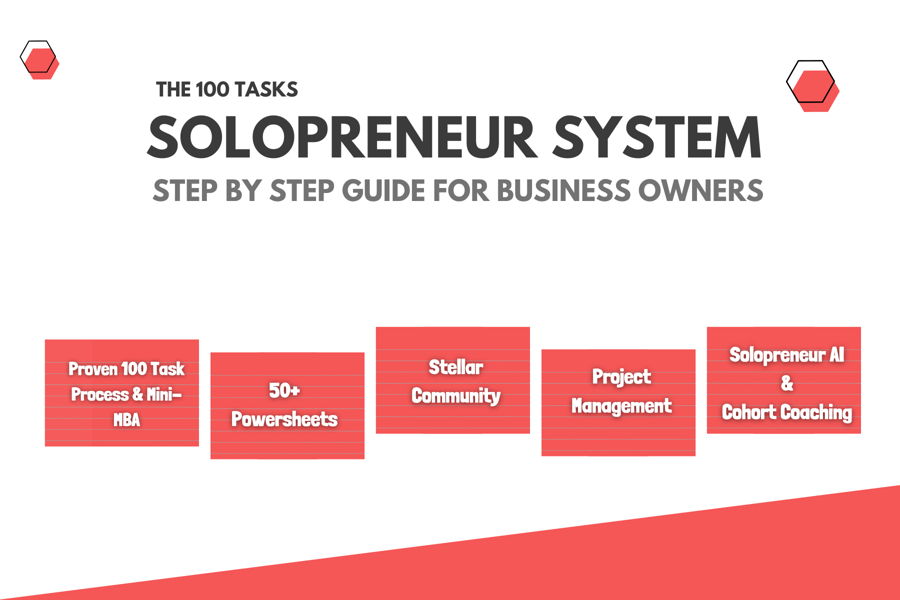Learn how to recognize and address freelance client red flags with actionable strategies to handle scope creep, poor communication, unrealistic deadlines, and more.
Freelancing offers flexibility and creative control, but it comes with the challenge of navigating difficult client relationships.
As a freelancer, spotting freelance client red flags before you begin working with them is crucial for maintaining healthy business relationships and protecting your time, energy, and finances.
Identifying freelance client red flags early can help freelancers maintain their professionalism, prevent misunderstandings, scope creep, and late payments, ensure that they set clear expectations, avoid unnecessary stress, and work with clients who respect your value.
Contents
12 Freelance Client Red Flags & How to Address Them
In this detailed guide to recognizing freelance client red flags, understanding the mindset behind them, and actionable responses you can use to handle these situations with emotional intelligence.
#1. Scope creep without compensation
Some clients will continuously add extra tasks to the project without acknowledging the additional time and effort involved. They may frame these as small favors with comments like, “This should only take a few minutes” or “Can you just squeeze this in?”
Clients who exhibit scope creep often lack an understanding of the project’s complexity or assume that minor tasks won’t significantly impact the freelancer’s workload. They may also be testing boundaries to see how much they can get without additional costs.
How to Address It:
Be firm but professional when addressing scope creep. For example, you can say:
“I’d be happy to help with this additional task. Let me provide a quote for the extra work and adjust the timeline accordingly.”
If the client insists the task is minor, calmly refer back to your original agreement:
“This request is outside the agreed scope of work. To ensure I meet your expectations, I’ll need to adjust the contract before proceeding.”
#2. Vague or unclear expectations
Clients who are unclear about their goals often provide little guidance and rely on you to define the project for them. They may use phrases like, “I’m not sure exactly what I want, but I’ll know it when I see it.” This often leads to endless revisions and frustration on both sides.
These clients may genuinely not know what they want, but instead of investing time to figure it out, they delegate the responsibility to you. This often stems from a lack of preparation or a belief that you’ll intuitively “guess” what they need.
How to Address It:
Guide the client with specific questions:
“Can you share examples of work you like or explain the primary goal for this project? This will help me create something that aligns with your vision.”
To limit revisions, include a clause in your contract:
“The project includes up to two rounds of revisions. Additional revisions can be completed at an hourly rate of [insert rate].”
#3. Unwillingness to sign a freelance contract
Clients who resist freelance contracts may say things like, “We don’t need to complicate things with paperwork” or “I trust you — let’s just get started.”
Some clients may be disorganized or believe that a handshake deal shows trust. Others might actively avoid contracts to evade accountability for payment or other commitments.
How to Address It:
Reassure the client that contracts protect both parties:
“Having a contract ensures we’re aligned on expectations and safeguards our working relationship. I can’t begin the project without one.”
If the client refuses to sign, consider this a dealbreaker:
“I completely understand if contracts feel formal, but they are part of my business process. If this doesn’t work for you, I might not be the right fit for this project.”
#4. Unrealistic deadlines
Clients may push for impossibly short timelines, saying, “I need this done by tomorrow” or “This should be quick—just prioritize it.”
These clients often lack awareness of the time required for quality work or prioritize their own schedule above all else. They might also be in a rush due to poor planning on their part.
How to Address It:
Set clear boundaries and educate the client on the process:
“To deliver the best results, I need [specific timeline]. Rushing this would compromise the quality of the work, which I want to avoid.”
If the timeline is non-negotiable, you can offer an expedited service fee:
“If this is an urgent request, I can adjust my schedule for a rush fee of [insert fee]. Let me know how you’d like to proceed.”
#5. Lowballing or excessive rate negotiation
Clients who undervalue your services may compare your rates to cheaper options or try to offer exposure instead of payment. Typical statements include, “Can you lower your rate? Someone else offered to do it for less” or “This project will give you great visibility.”
These clients either do not value your expertise or are looking for the cheapest solution, regardless of quality. They may also assume freelancers are desperate for work and willing to compromise.
How to Address It:
Maintain your professionalism and assert your value:
“My rates reflect my experience and the quality of work I deliver. If budget is a concern, we can adjust the scope to fit within your range.”
For exposure offers, kindly decline:
“Thank you for the opportunity, but I focus on paid projects. I’m happy to discuss how we can tailor this project to meet your needs within your budget.”
#6. Poor communication
Poor communication can manifest as delayed responses that disrupt project timelines or excessive messaging, such as emails or texts at odd hours.
Clients with poor communication skills may lack organization or view freelancers as always-on resources. They might not realize the impact of their behavior on your workflow.
How to Address It:
Establish communication guidelines early:
“I respond to emails within 24 hours on weekdays. Let’s schedule regular updates to keep the project on track.”
For excessive communication, gently remind them:
“I appreciate your enthusiasm! To ensure efficiency, let’s consolidate messages and stick to our scheduled check-ins.”
#7. Non-payment or delayed payment history
Clients with a history of late payments or unclear payment terms may try to delay or avoid paying altogether. They might offer excuses like, “Our accounting department is slow” or “There was a glitch in the system.”
Some clients may be financially unstable or disorganized, while others may take advantage of your work without paying fairly. They could also see freelancers as easy targets for postponing payments.
How to Address It:
Be proactive and professional in addressing payment terms before starting:
“Let’s ensure payment terms are clear before we begin. My standard payment terms are [X days], with a late fee of [X amount] if payment is overdue.”
If payments become an issue, follow up with:
“I’d like to remind you that the payment for [specific service] is overdue. Please confirm the payment date or let me know if there are any issues.”
#8. Micromanaging
A micromanaging client often gives too much direction and asks for frequent updates, even minor details. They may ask things like, “Why did you choose this approach? Can you change it?”
This often reflects a lack of trust or a client’s insecurity about the project’s outcome. They may feel the need to control every aspect to ensure success or fear the work won’t meet their standards.
How to Address It:
Set boundaries by establishing your professional expertise:
“I understand that you want the project to align with your vision. I’ll ensure that all decisions stay within the parameters we agreed on, but I’ll handle the details from here.”
If micromanaging persists, gently remind them of the trust-based working relationship:
“I believe in delivering high-quality work that meets your expectations. If there’s a specific concern, let’s discuss it to stay on track.”
#9. Too many revisions without clear guidelines
Some clients will ask for constant revisions without a clear idea of what they actually want, leading to endless back-and-forth. They may say things like, “Can you change this a bit?” without giving specific feedback.
These clients may be unsure about their needs or have unclear expectations. They may also be testing how much they can get without paying for extra time or revisions.
How to Address It:
Clarify the number of revisions and the process upfront:
“My contract includes up to [X] rounds of revisions. Please provide clear, consolidated feedback so we can complete the process efficiently.”
If the revisions keep adding up, you can say:
“We’ve reached the limit for revisions as outlined in the contract. Any additional changes will be billed at [X rate] per hour.”
#10. Overly complex requests
Some clients may ask for overly complicated work that doesn’t align with the original project, saying, “Can you make this even more intricate?” or “Can you add this feature too?”
Clients often do this because they have high expectations or lack awareness of the complexities involved in executing their vision. They may also not realize the extra effort required.
How to Address It:
Reiterate the project scope and provide solutions for the new request:
“This new request will require a different approach and timeline. Would you like to adjust the scope of the project, or should we create a new proposal?”
#11. Lack of respect for your time
Clients who disregard your time might contact you at odd hours, expect immediate responses, or cancel meetings without notice.
These clients may not fully understand the concept of freelance work or might be trying to take advantage of your availability for their own convenience.
How to Address It:
Set clear working hours:
“I’m available Monday through Friday from [X] to [X] PM. I’ll respond during these hours, and we can schedule time to meet if necessary.”
Be firm but respectful when they infringe upon your time:
“I understand this is urgent for you, but I can only work within the hours we agreed on. Let’s set a time to address your concerns.”
#12. Flattery or unrealistic promises
Clients who excessively flatter or make grand promises about future projects may say things like, “I’m going to tell everyone about your great work!” or “You’re perfect for all of my future projects.”
These clients may be trying to avoid paying fair rates by dangling promises of future work. They may also use flattery to manipulate you into underpricing or rushing your work.
How to Address It:
Stay focused on the current project and establish terms for future work:
“Thank you for the compliment. Let’s focus on completing this project successfully. If you’d like to discuss future work, I’d be happy to provide a proposal.”
By identifying these freelance client red flags and understanding the mindset behind them, freelancers can better navigate tricky situations and ensure they protect both their business and emotional well-being.
Recognizing and addressing client red flags before you begin working together is essential for maintaining a professional and balanced freelance business.
Setting clear expectations, boundaries, and agreements upfront can help avoid common pitfalls, ensuring you and your clients align before working together.
Freelancing Courses List to Attract Better Clients
Taking freelancing courses is one of the best ways to level up your skills and attract better clients. These freelancing courses for beginners will lay a solid foundation, ensuring you stand out in a competitive market.
Whether you’re looking for the best freelancing courses online to get started freelancing or enhance your expertise, these courses provide valuable insights into client management, pricing strategies, and marketing your services effectively.
#1. Difficult Clients: How to Deal With Bad Freelance Clients
Dealing with difficult clients requires clear communication, setting boundaries, and having a solid freelancer contract to prevent misunderstandings and ensure timely payment. Use de-escalation techniques, manage client issues at different stages, and take action if clients disappear without paying.
#2. Finding Clients: How to Attract More & Better Clients
Learn how to overcome client acquisition barriers and implement proven strategies for success. Learn to captivate potential clients, nurture relationships through consistent communication, pinpoint your target market, and convert leads into winning proposals with effective, conversion-driven tactics.
#3. Upwork Client Psychology: How Freelance Clients Think
This course teaches you how to understand client motivations and behavior, giving you an edge in winning jobs. Learn when, why, and how clients search for freelancers, discover client personality types, and tailor your approach to meet their expectations in various industries.
#4. Upwork Proposal Mastery: The Complete Guide to Proposal Writing
Master proposal writing, boost your Upwork profiles, and efficiently search for jobs. Learn how to impress clients, use AI tools for better productivity, and land more freelance opportunities.
#5. 100K Freelancing in 35 Minutes from Top 1% Ranked Freelancer
Break free from low-paying clients and start commanding high fees for your expertise. Learn the key differences between selling services versus outcomes, discover how to find the right audience by confidently charging $1,000 or more for your services, focusing on delivering results clients are eager to pay for.
#6. Six-Figure Freelance: Build a Profitable Freelance Business
This course helps you build a profitable freelance business and land high-paying clients today. Learn how to set up your business, market your services, master cold outreach, use social media, craft winning proposals, and price your services for maximum profit.
#7. Contract Law for Freelancers: Contract Law Beginner’s Course
In this course, you’ll create your first business contract to protect yourself and ensure timely payment. Learn essential clauses and how to craft versatile contracts for multiple clients, with bonus tips for effective creation.
#8. 100 Tasks Solopreneur System
The 100 Tasks Solopreneur System is a proven step-by-step process, all-in-one guide, framework, toolkit, and community to help solopreneurs and freelancers launch, optimize, and automate their businesses 3 to 5 times faster.
Click here to get the 100 Tasks Solopreneur Course
Why a Freelancer Contract is Essential for Your Business
As a freelancer, protecting both your work and your time is crucial. One of the best ways to ensure clarity, avoid disputes with clients, and protect yourself and your freelance business is by using a formal freelancer contract that outlines the scope of work, payment terms, timelines, and expectations.
A freelancer contract helps to set clear expectations, define project scope, establish payment terms, and outline responsibilities for both parties. Without this formal agreement, misunderstandings can occur, which may lead to delayed payments, scope creep, or even the termination of the project before it’s completed.
If you’re unsure where to start, using a freelancer contract template can simplify the process. These templates can help you understand the key components, such as payment terms, deadlines, and confidentiality clauses, and provide a structured framework, ensuring you cover all the necessary points while allowing room for customization.
If you’re working with clients in the USA, you can protect your financial and legal interests as a freelancer with this Independent Contractor Contract Template.
This lawyer-approved written agreement ensures timely payments, and intellectual property rights, and shields freelancers and clients from potential legal issues by ensuring that all your financial and legal interests are fully protected.
Some freelancing sites like Fiverr and Upwork, offer easy access to these templates as part of their service, helping both freelancers and clients stay on the same page.
In addition to standard contracts, there are freelancer contract agreements designed for different countries, such as a freelancer contract template for the UK or a freelancer contract agreement for India, to ensure compliance with local laws.
Freelancers in Germany may require freelancer contracts for Germany tailored to meet local requirements. Hire freelancer contract law lawyers when you need legal guidance to ensure your contract complies with local laws, protects your interests, and resolves complex disputes.
Ultimately, whether you’re working with a local client or across borders, a freelancer contract format that suits your needs is essential for establishing professionalism and avoiding potential conflicts.
By signing a proper freelancer contract, you’re ensuring that both you and your client are aligned on the terms, which leads to smoother and more successful freelance projects. This protects you as a freelancer and ensures that your clients receive the quality work they expect.
Freelancing Tips & Tutorials
- How to Build a Successful Freelancer Business
- How to Scale and Grow Your Solopreneur Business
- 8 Reasons to Incorporate a Business as a Freelancer
- 10 Tips to Safeguard Your Privacy as a Freelancer
- Personal Finance for Freelancers and Solopreneurs
- 15 Most In-Demand Freelance Skills to Learn
- How To Make Money as a Creative Freelancer
- How To Build a Professional Freelance Resume
- 10 Ways to Get More Freelance Writing Gigs
- How To Increase Your Freelance Writing Income
- How To Negotiate Freelance Rates & Sell Value Instead of Price
- How To Write a Business Proposal (+ Free Business Proposal Templates)
- Personal Branding for Freelancers: How to Build a Freelancer Brand
- Remote Work Best Practices for Freelancers & Independent Contractors
- 12 LinkedIn B2B Marketing Best Practices to Find Freelance Clients
© 2024, Priya Florence Shah. All rights reserved.
Priya Florence Shah is a bestselling author and an award-winning blogger. Check out her book on emotional self-care for women. Priya writes short stories and poetry and chills with her two-legged and four-legged kids in her spare time.
Discover more from Business & Branding Tips
Subscribe to get the latest posts sent to your email.
















